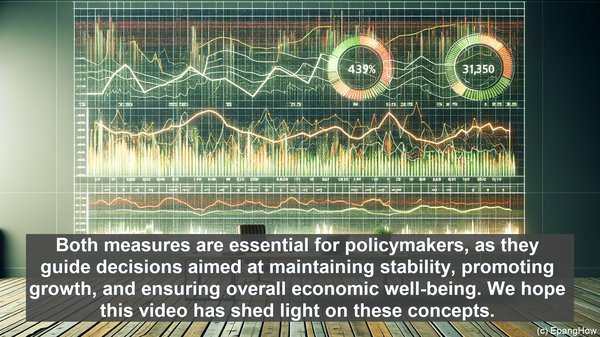Introduction: The Essence of Economic Output
Hello everyone! Welcome to our channel. Today, we’re diving into the intriguing world of economic output. While it may seem like a straightforward concept, there are various dimensions to consider. Two key aspects that often come up in discussions are full employment output and potential output. Let’s begin by understanding what these terms mean.
Defining Full Employment Output
Full employment output, as the name suggests, refers to the level of output in an economy when all available resources, including labor, are fully utilized. In this scenario, unemployment is at its natural rate, and the economy is operating at its maximum potential. It represents the highest sustainable level of production without causing inflationary pressures.

Unpacking Potential Output
Potential output, on the other hand, is an estimate of the maximum level of production an economy can achieve over a more extended period. It assumes that all resources are utilized efficiently, but it doesn’t necessarily mean full employment. Potential output is influenced by factors such as technology, capital stock, and the overall efficiency of resource allocation.
The Role of Full Employment Output
Full employment output is a crucial benchmark for policymakers and economists. When an economy is operating below its full employment output, it indicates a level of underutilization of resources, including labor. This situation often corresponds to higher unemployment rates and a decline in overall economic welfare. Policymakers strive to implement measures that can push the economy towards its full employment output.
Understanding Potential Output’s Significance
Potential output, on the other hand, provides insights into an economy’s long-term growth prospects. It serves as a reference point for assessing the sustainability of current production levels. If an economy consistently operates above its potential output, it may face inflationary pressures, indicating an overheating economy. Conversely, persistent gaps between actual output and potential output may signal inefficiencies or structural issues.

Factors Affecting Potential Output
Several factors influence an economy’s potential output. Technological advancements, for instance, can enhance productivity, leading to higher potential output levels. Similarly, investments in physical and human capital can contribute to increased production capacity. Additionally, factors like institutional frameworks, government policies, and the overall business environment play a role in determining potential output.
Economic Fluctuations: The Output Gap
In reality, economies often deviate from both their full employment output and potential output. The difference between actual output and potential output is known as the output gap. A positive output gap indicates that the economy is operating above its potential, while a negative gap suggests underutilization of resources. Understanding and addressing these gaps is crucial for policymakers to ensure stable economic conditions.
